The Garden Bumble Bee - Bombus hortorum
Updated: 25th February 2020
The Garden Bumble bee, Bombus
hortorum, has the longest tongue of all British bumble bee species, and it
is one of only two remaining long tongued bumble bee species that are thought to
be widespread.
Having a long tongue means that it is a very useful
pollinator of flowers with gullet, bell and funnel and flag type florets, and
this means they are helpful pollinators of the bean and pea family, as well as
clover (alfalfa), which is an important crop for cattle. See my page flower border for bees for further information
about different flower shapes.
Identifying Bombus hortorum
According to Ted Benton’s book, Bumblebees, queens can be
variable in size, although the ones that I have come across have been on the
larger size. The range described in
Benton’s book is 19-22mm. The Field
Guides To The Bumblebees of Great Britain & Ireland by Edwards and Jenner describes
the Garden Bumblebee as “a large, robust species although early workers may be
much smaller”. This is in line with my
personal experience.
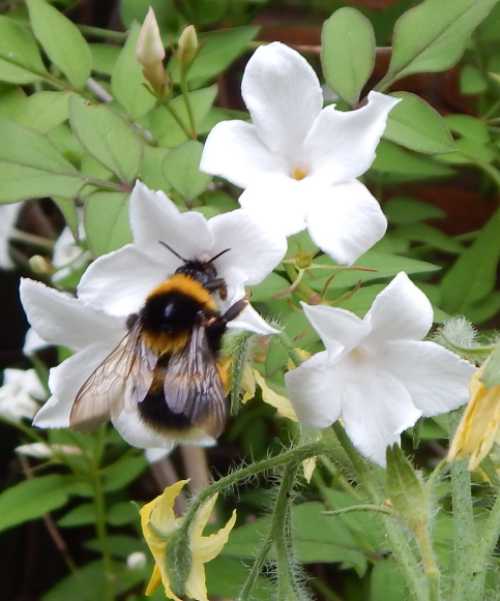 Garden Bumble bee, Bombus hortorum on jasmine flower.
Garden Bumble bee, Bombus hortorum on jasmine flower.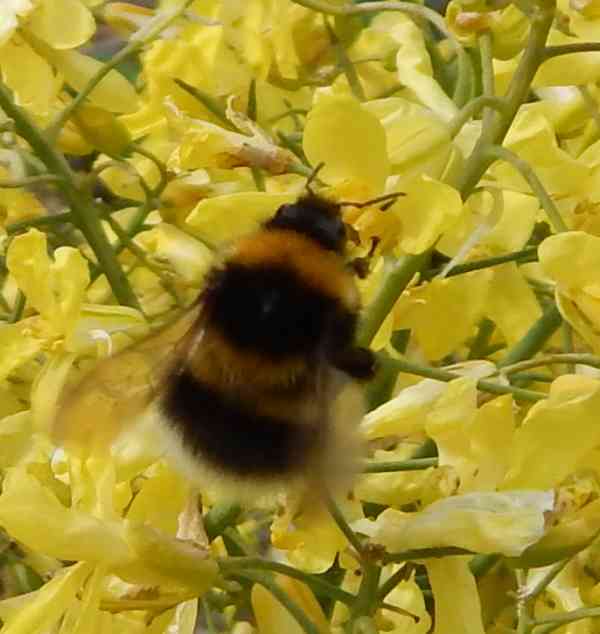 Garden Bumble bee, Bombus hortorum - (queen) on spring kale flowers on the allotment.
Garden Bumble bee, Bombus hortorum - (queen) on spring kale flowers on the allotment.Queens, workers and males all have two yellow bands on the thorax and one at the base of the abdomen, and a white tail. The face is long. One of the easiest ways to identify the Garden Bumblebee is by observing it as it approaches a flower, often with its very long tongue extended.
It can sometimes be mistaken for Bombus jonellus, which has a shorter face and is usually smaller, or Bombus ruderatus which is a rarer species. The latter may have ginger hair on the mandibles.
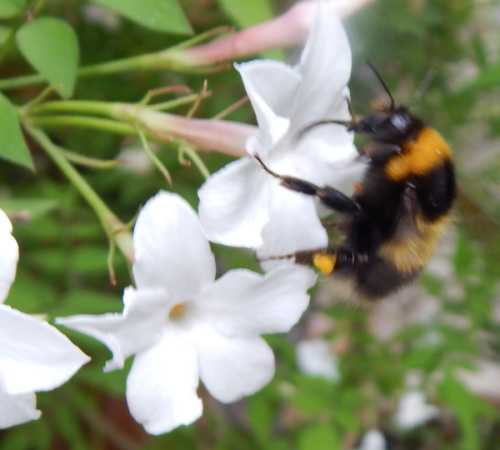 Bombus hortorum has a long tongue.
Bombus hortorum has a long tongue.Bombus hortorum habitat
It may be found in gardens, parks, and along the wildflower edges of woodlands.
Nests
Bombus hortorum usually makes its nest underground.
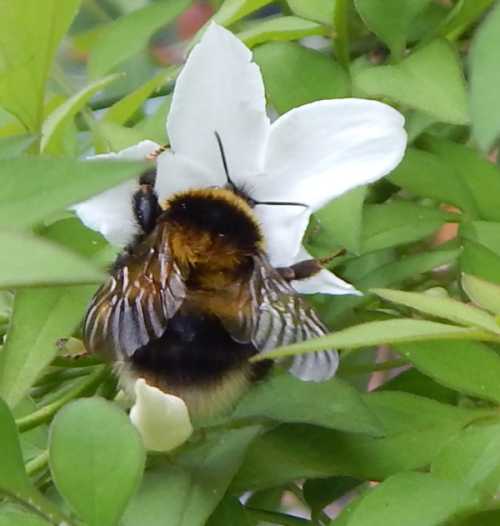 Garden Bumble bee, Bombus hortorum on jasmine flower.
Garden Bumble bee, Bombus hortorum on jasmine flower.Colony Size And Life Cycle
The queens emerge from around March onwards, and you may see them prospecting for nests between March and early May. Colonies tend to have around 100 workers. Males tend to appear around June.
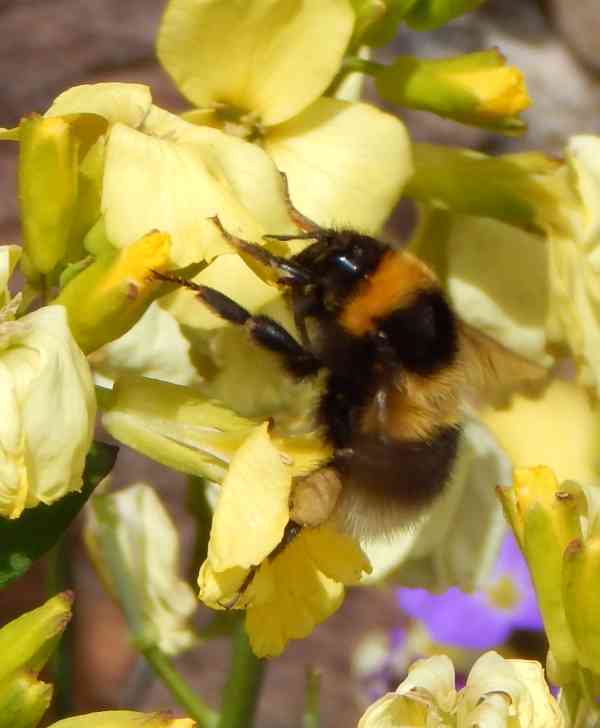 Garden Bumble bee, Bombus hortorum on wallflower.
Garden Bumble bee, Bombus hortorum on wallflower.Predators and parasites
Colonies may be attacked by the cuckoo bumble bee species,
Bombus barbutellus. Other parasites include tachinid fly, Brachicoma devia, and the conopid fly, Physocephalus rufipes.
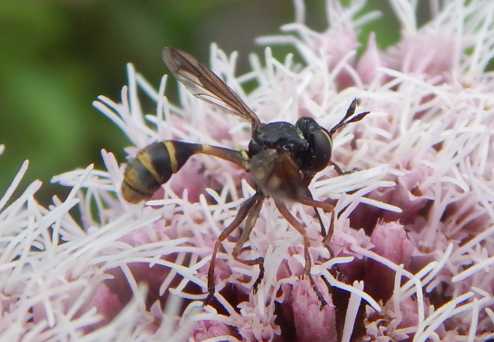 Conopid fly
Conopid flyFlowers
These bumble bees will feed on comfrey, dead nettles, apple, vetches, nasturtium, flowering currant, foxglove, knapweed, delphinium, thistles, mallow, bramble, honeysuckle, lavender, bluebell, aquilegia, daffodil, aubretia, flowering currant, and ceanothus among others.
Read more about bumble bees
- Is It Bumble Bee Or Bumblebee? Is It Written As One Word Or Two? Although both are used widely, here's an explanation as to why, according to the Entomological Society of America, it should be written as two words.
- The Bumble Bee Life Cycle - A Description, Photos And Video The bumble bee life cycle starts with an impregnated queen when she emerges from her nest from her winter snooze. She feeds and seeks a suitable place to nest.
- Bumble Bee Nests: Nesting Preferences Of Different Bumble Bees, and challenges in finding suitable locations for nesting.
- Bumble Bees All about bumble bees - their life cycles, pollination, and answers to common questions.
- Do Bumble Bees Make Honey? Bumble bees store nectar in little wax pots for feeding the colony as it grows, but it is not really quite the same thing as honey made by honey bees.
If you found this page helpful or interesting, I'd really be grateful if you would share it with others - if not this page, perhaps another, such as Gardening For Bees.
Thank you so much :) .